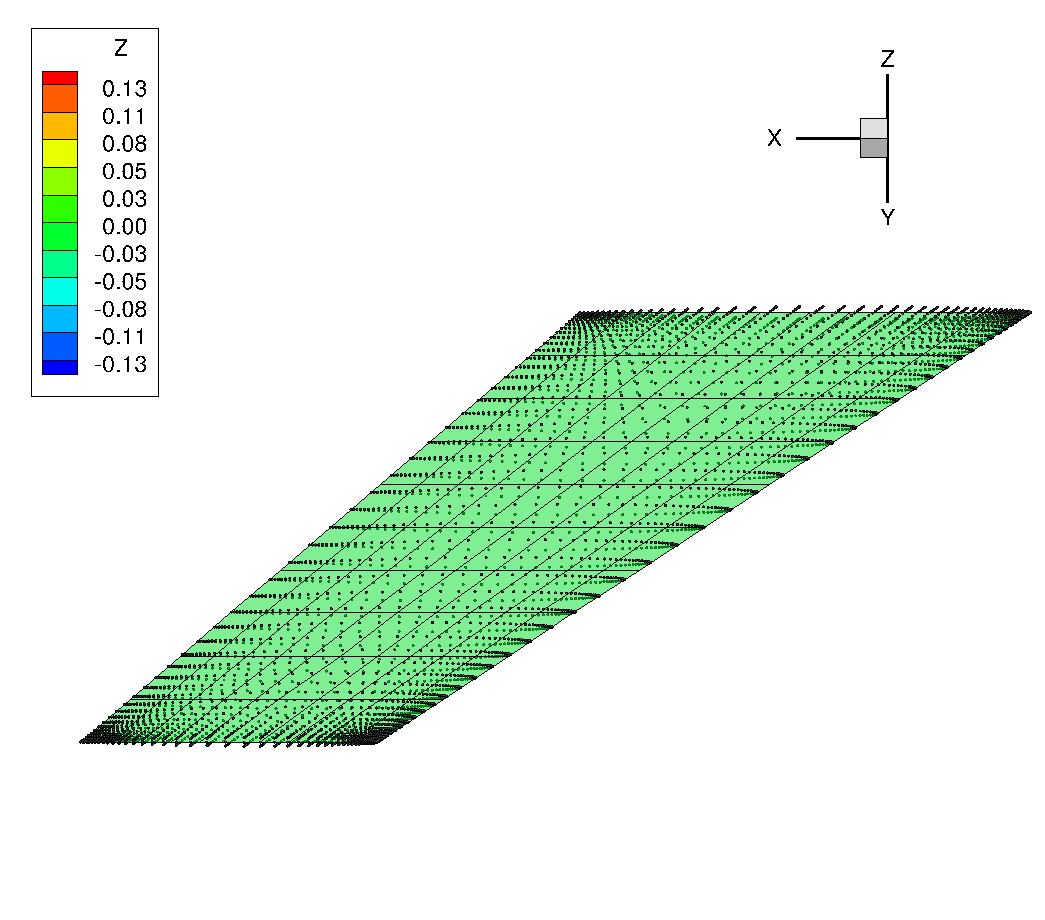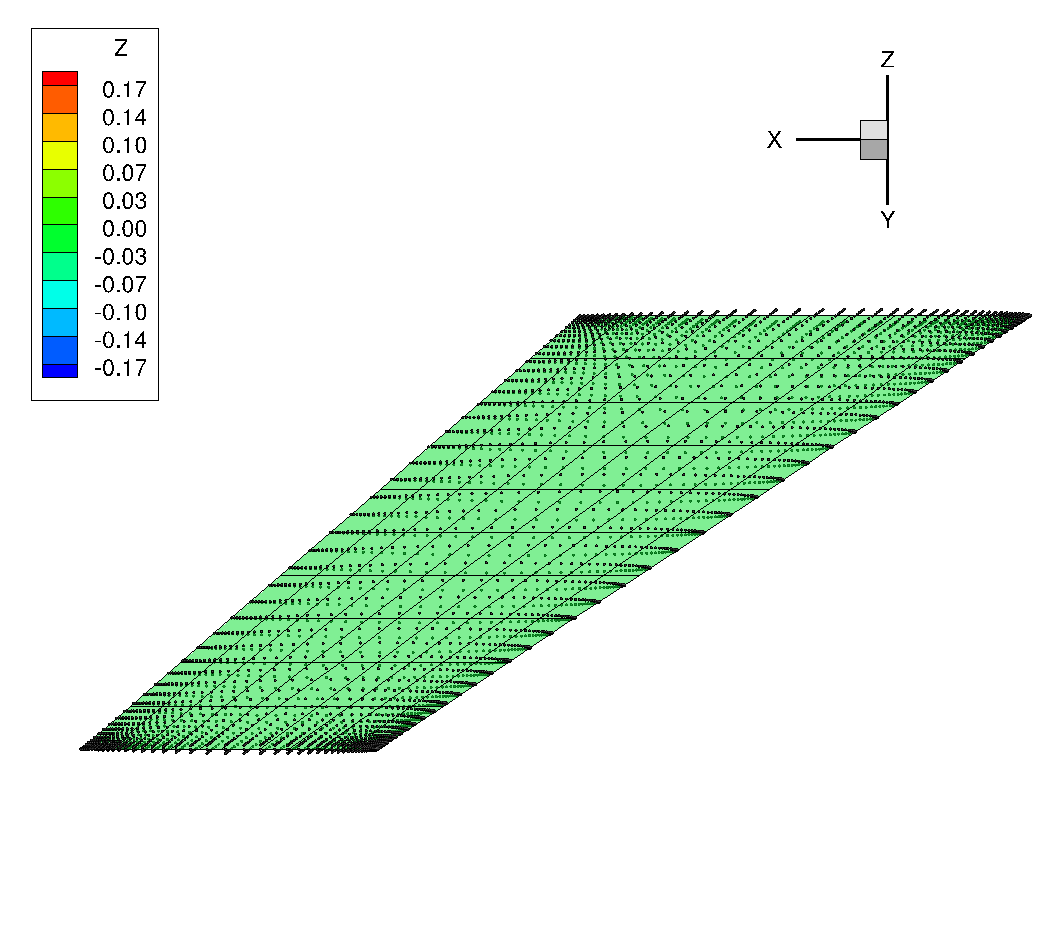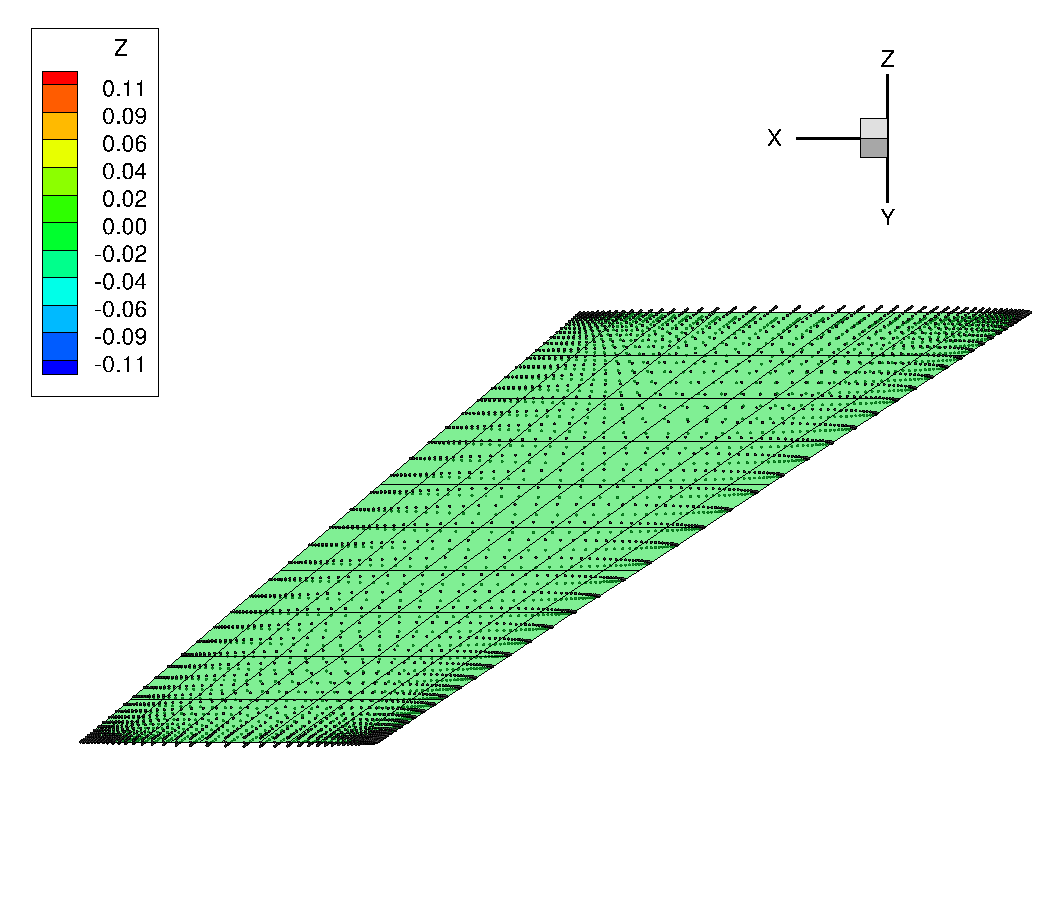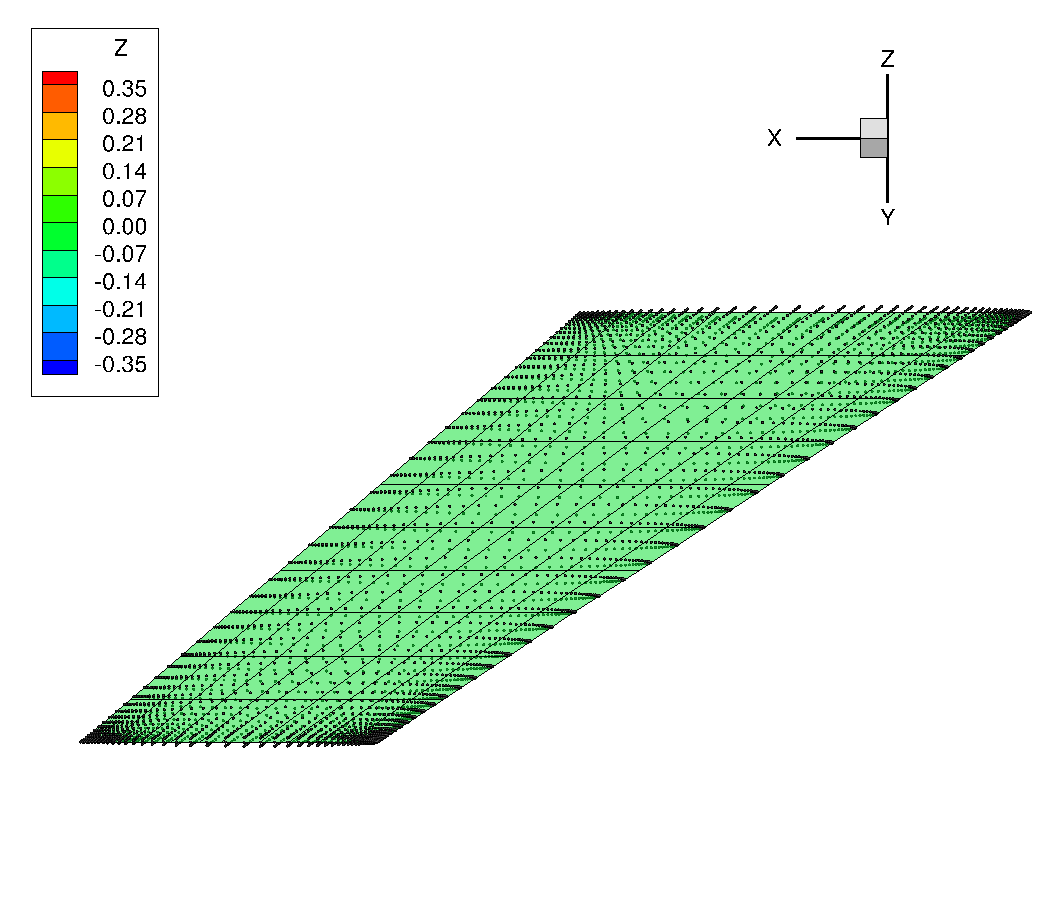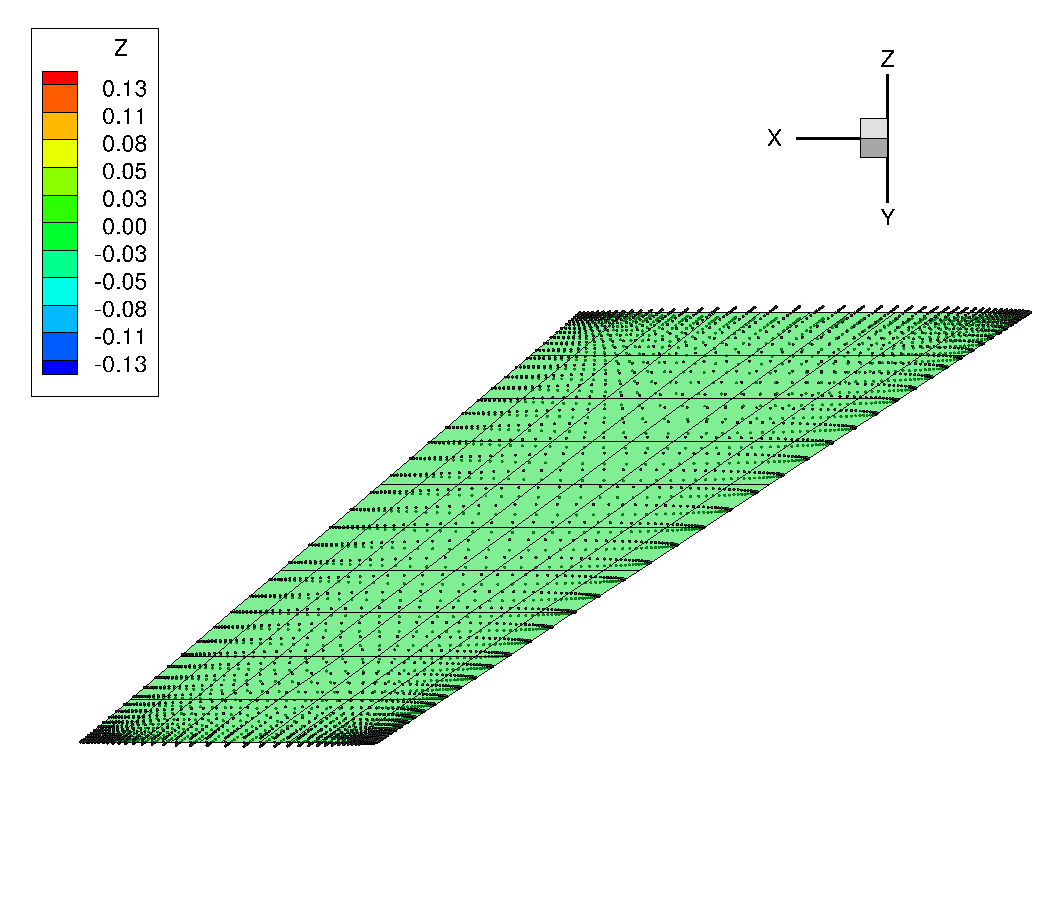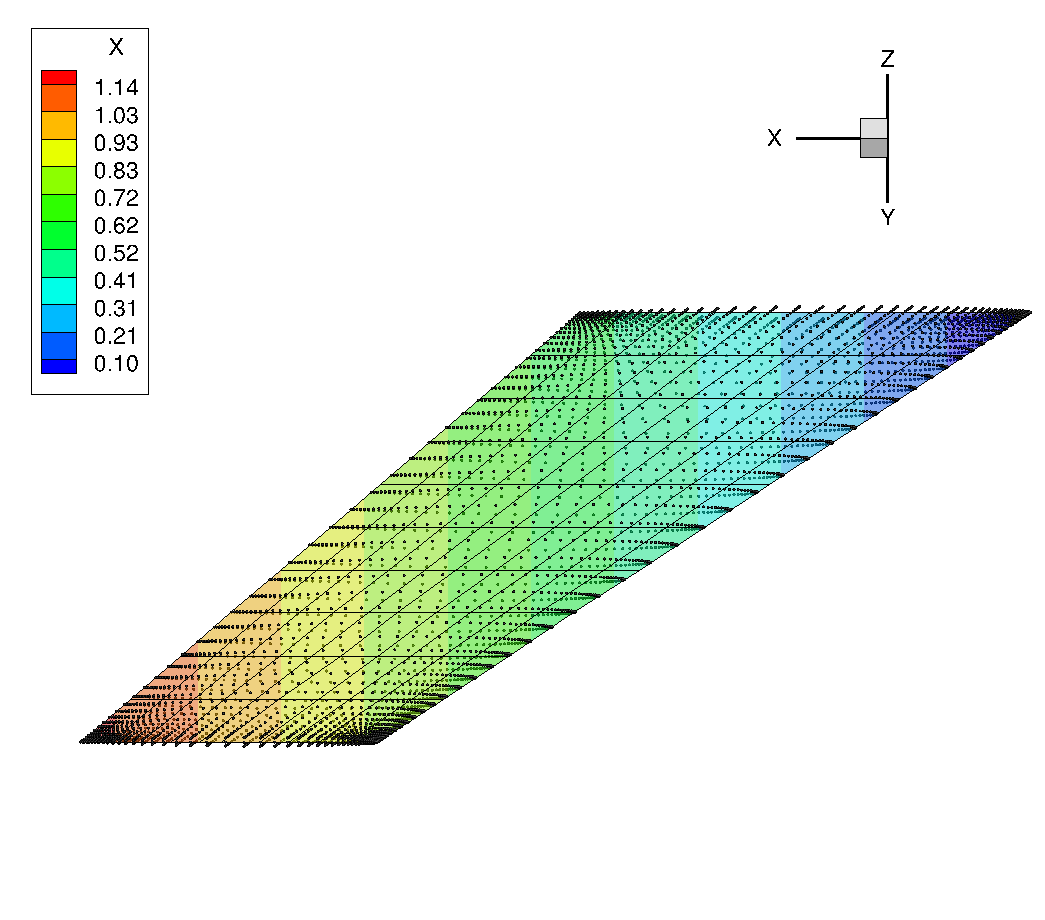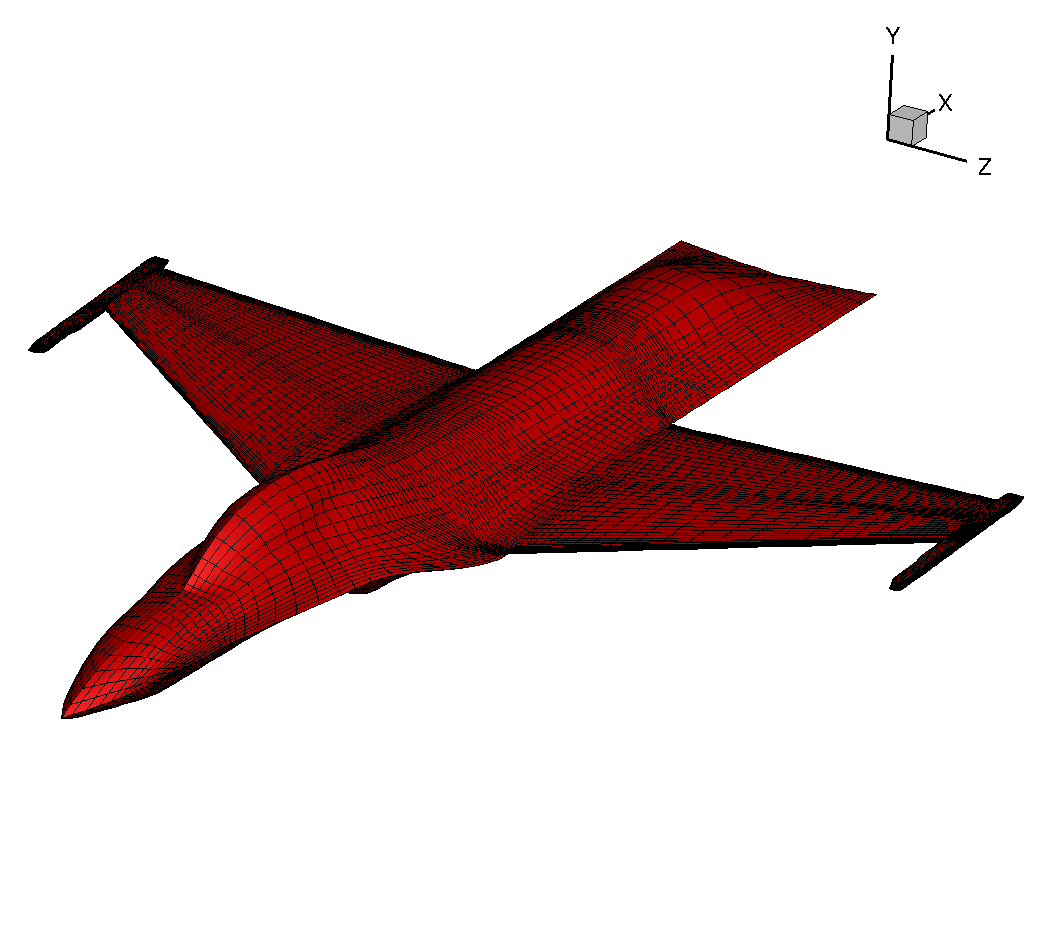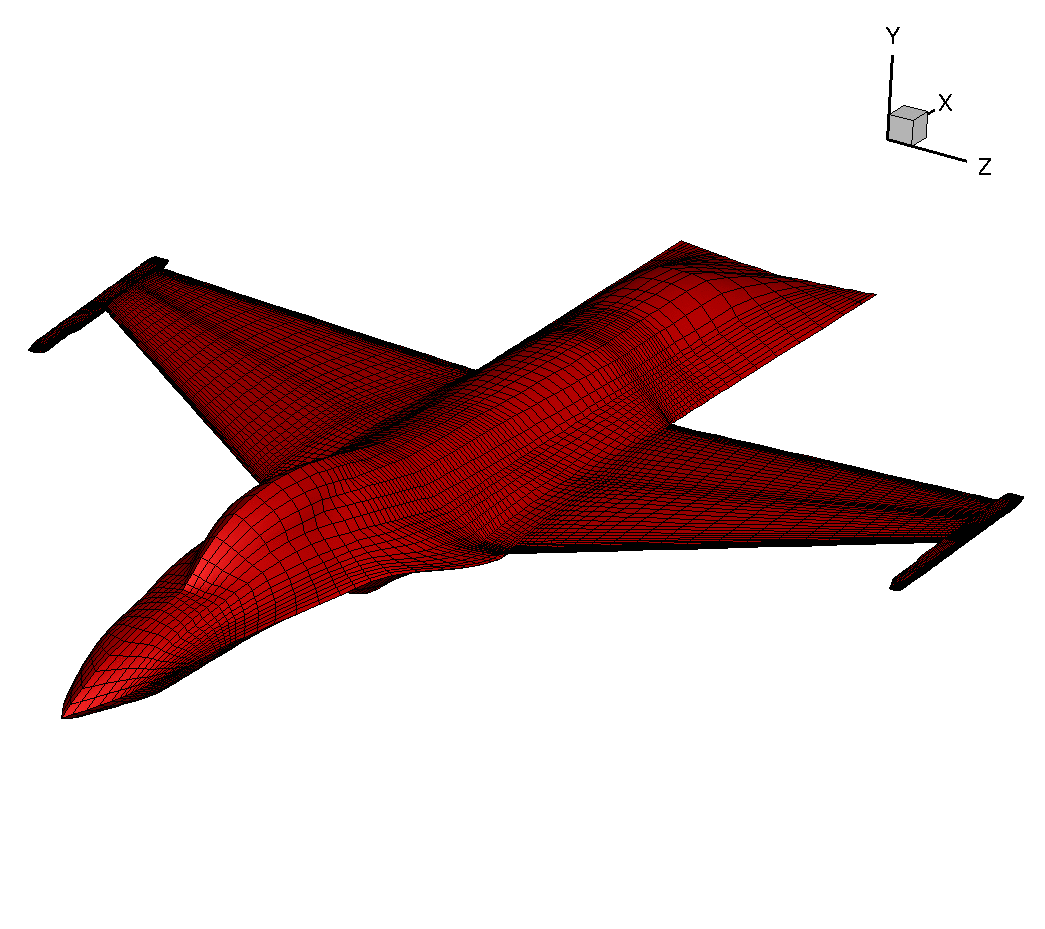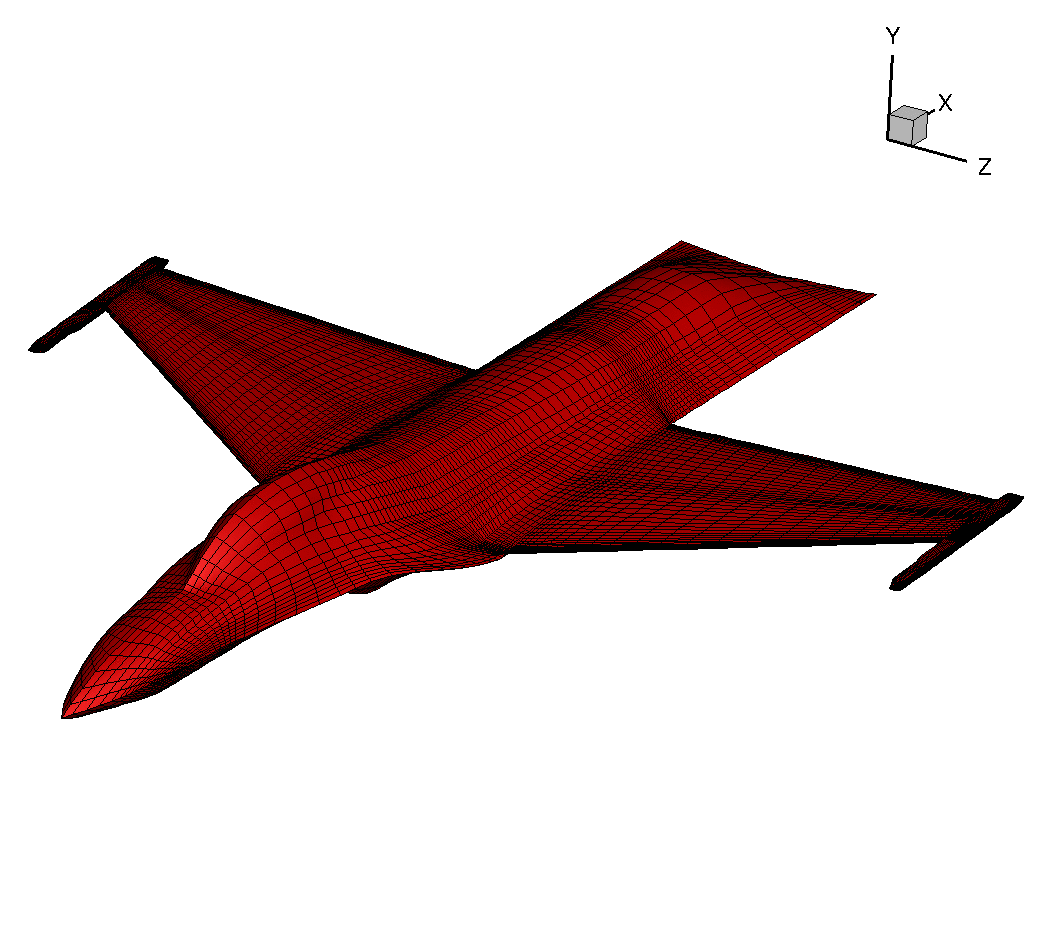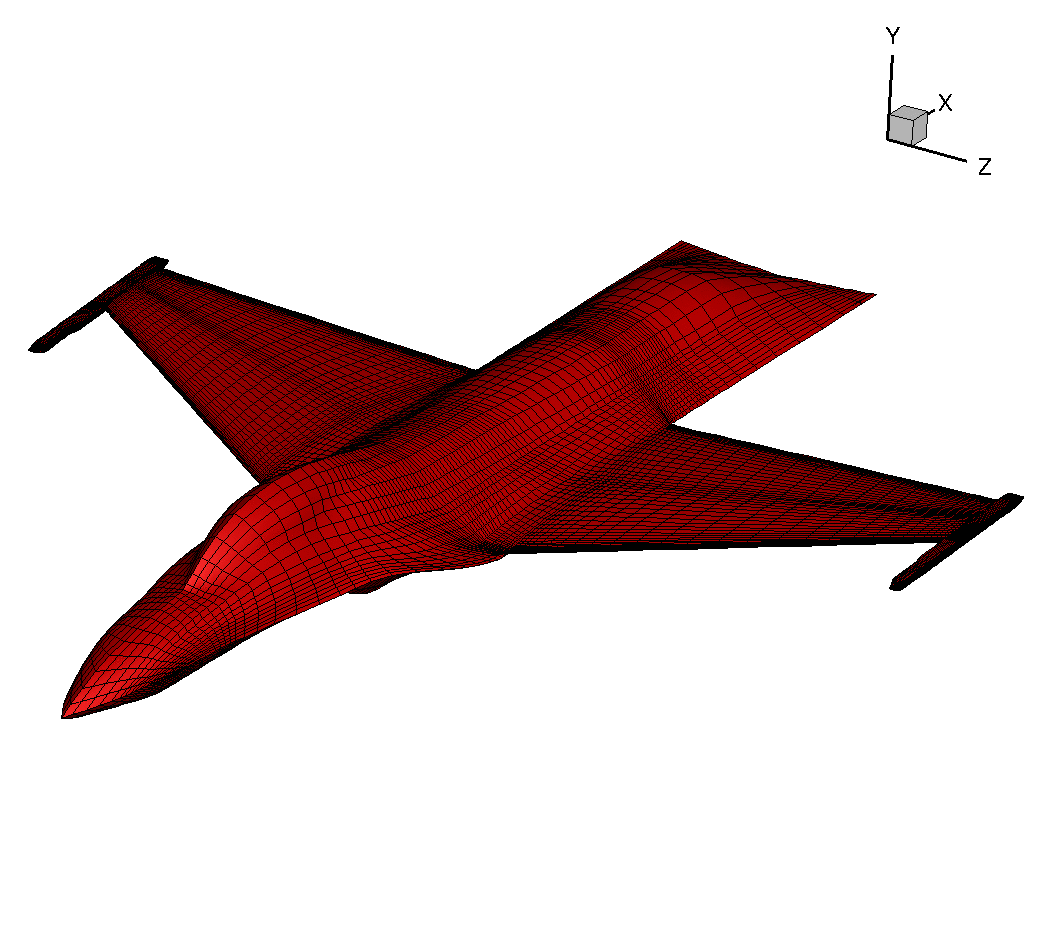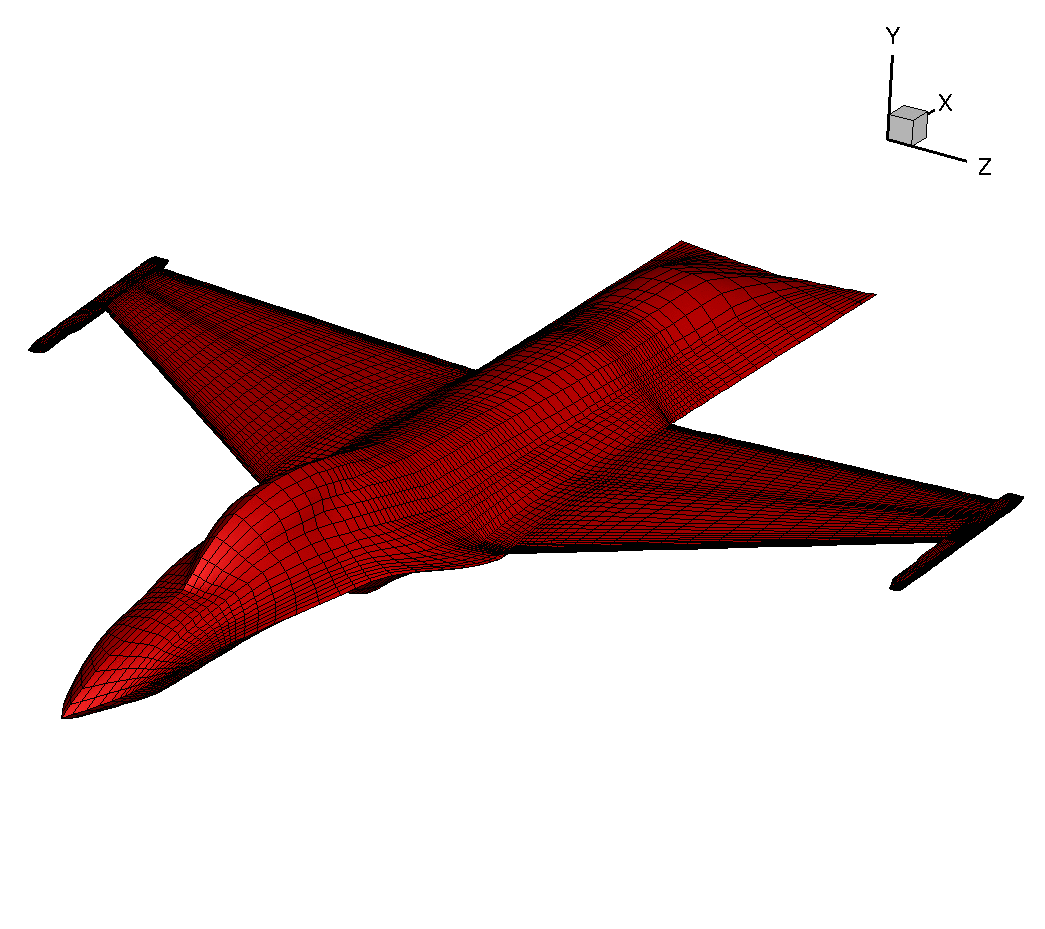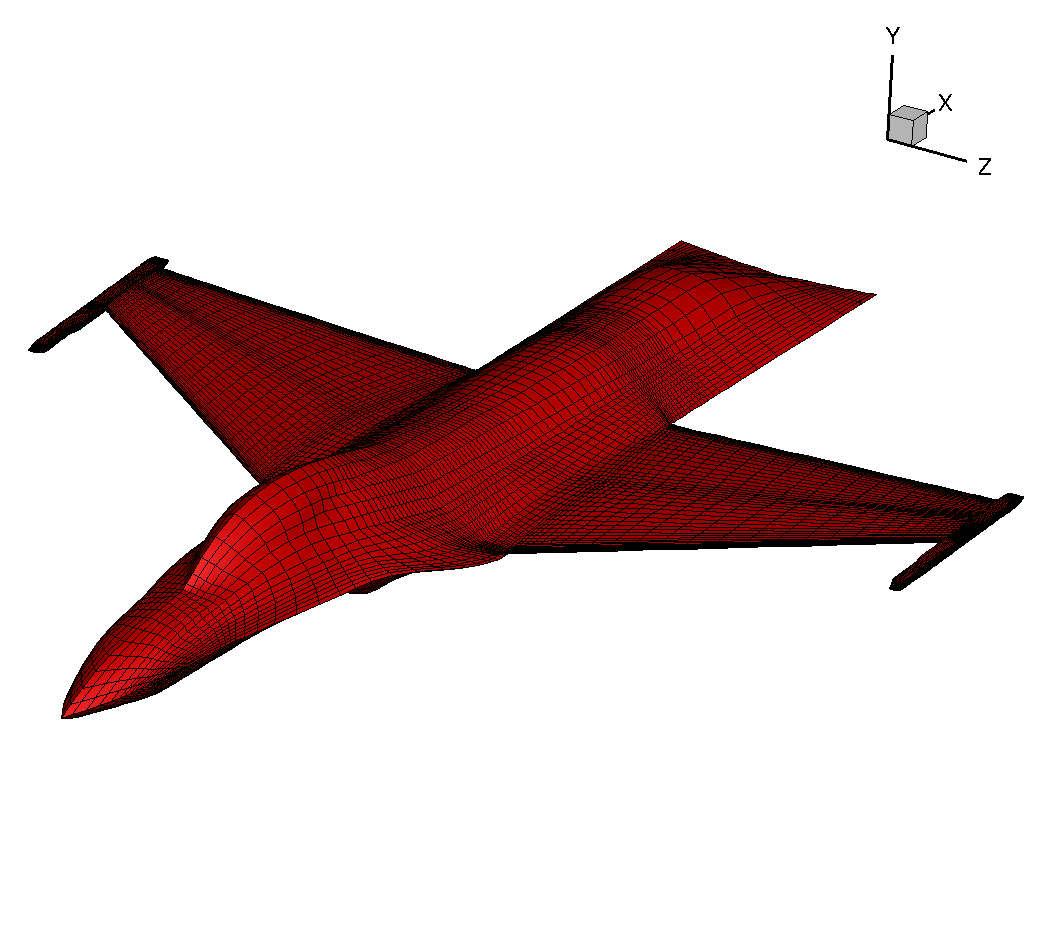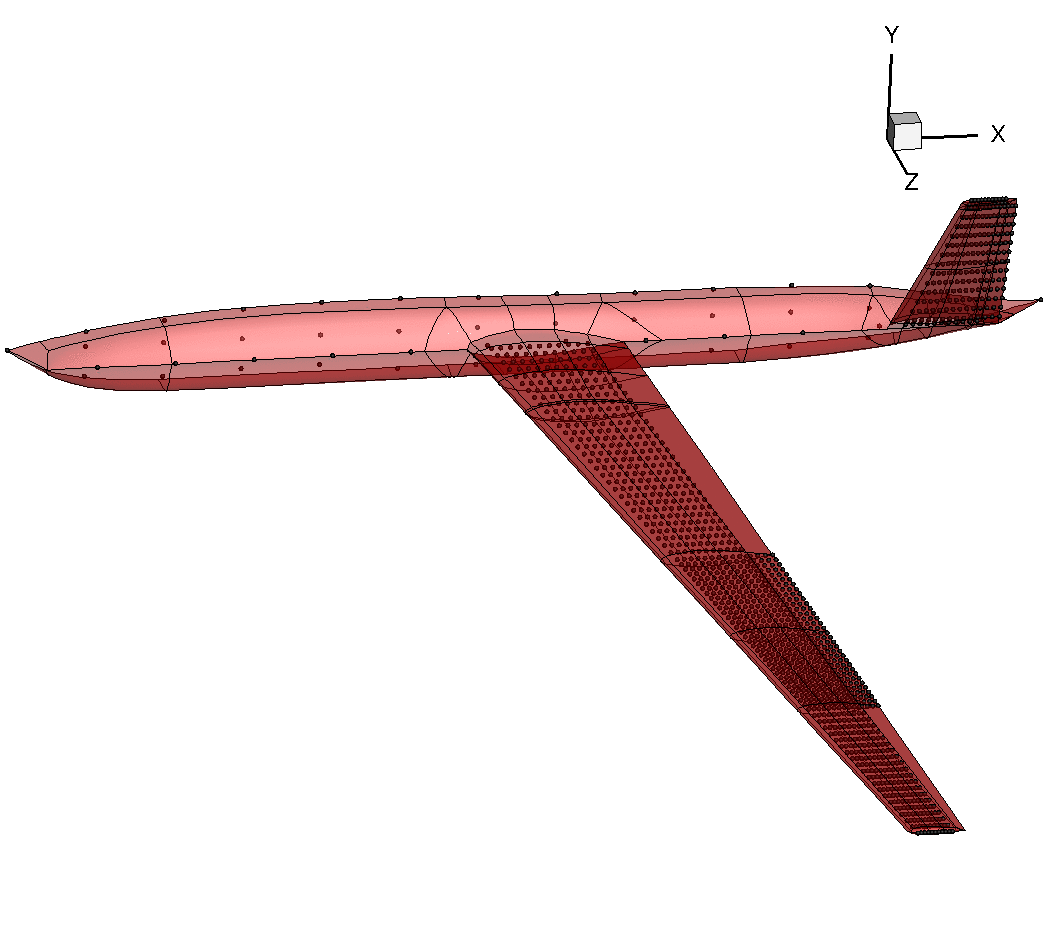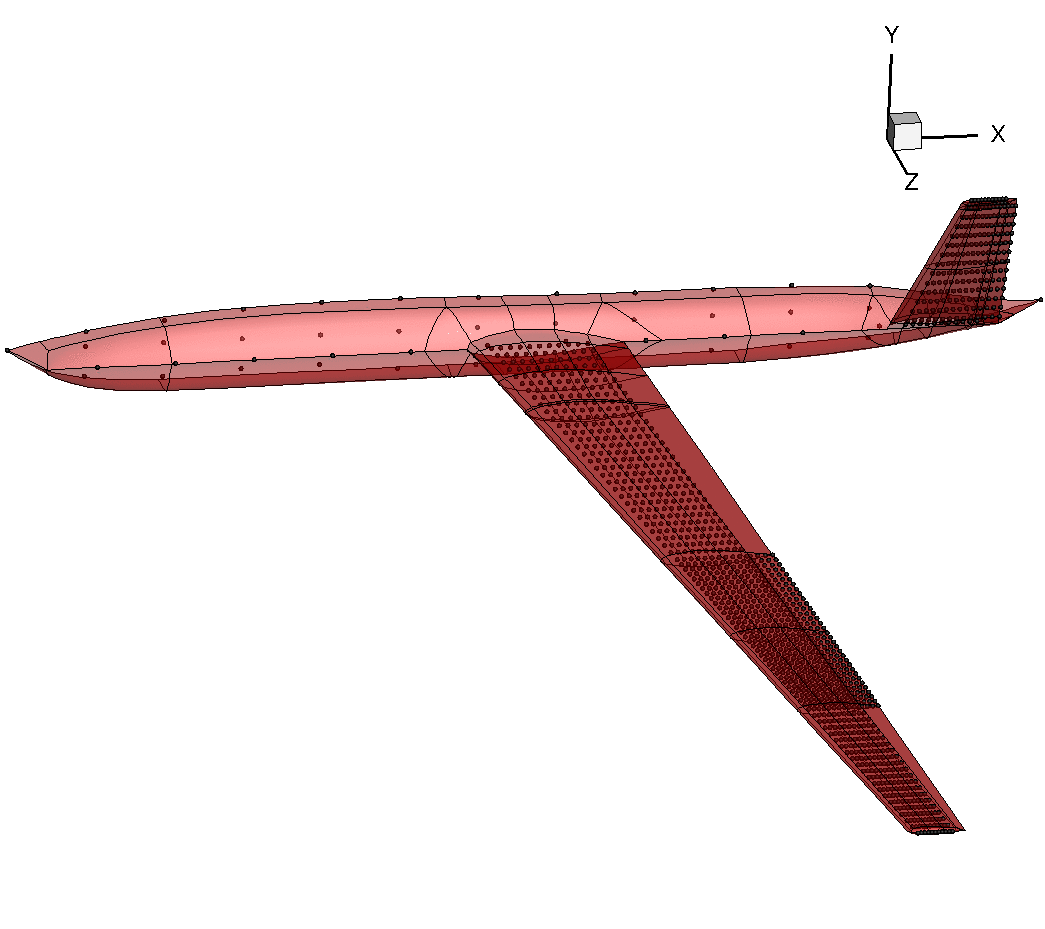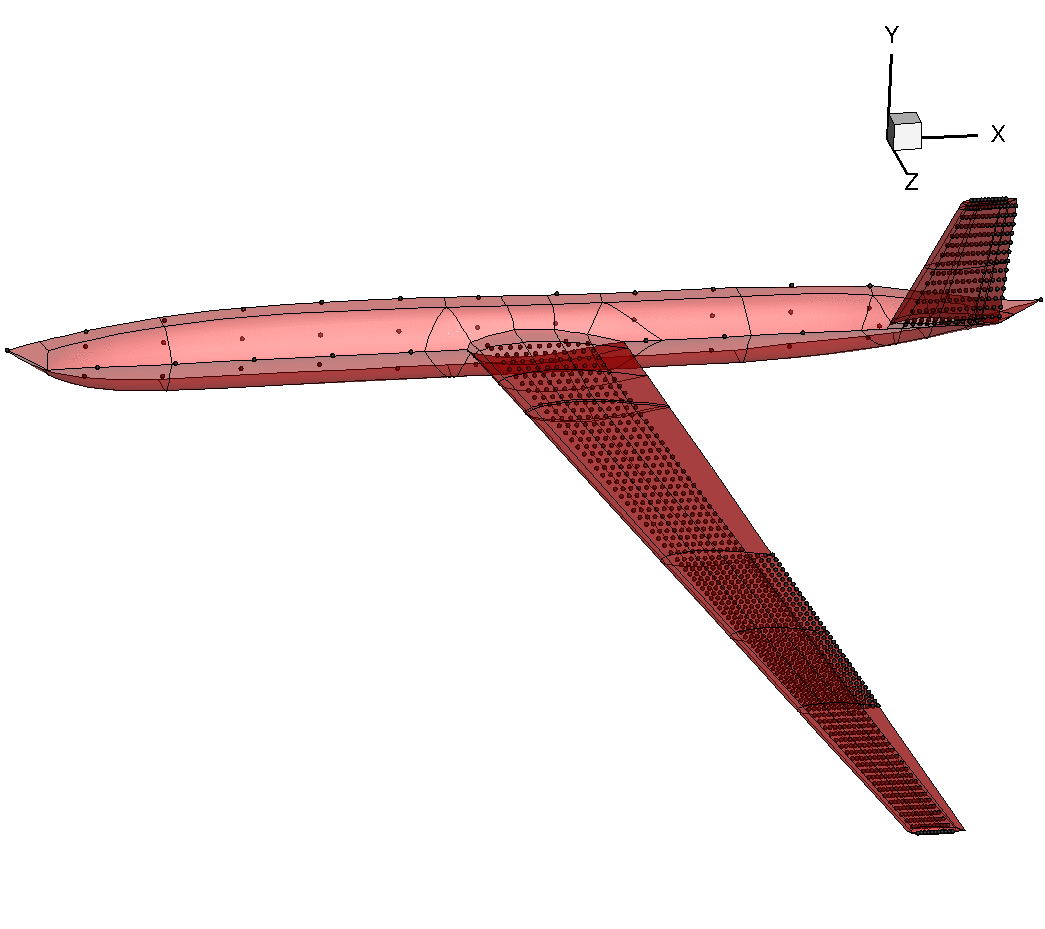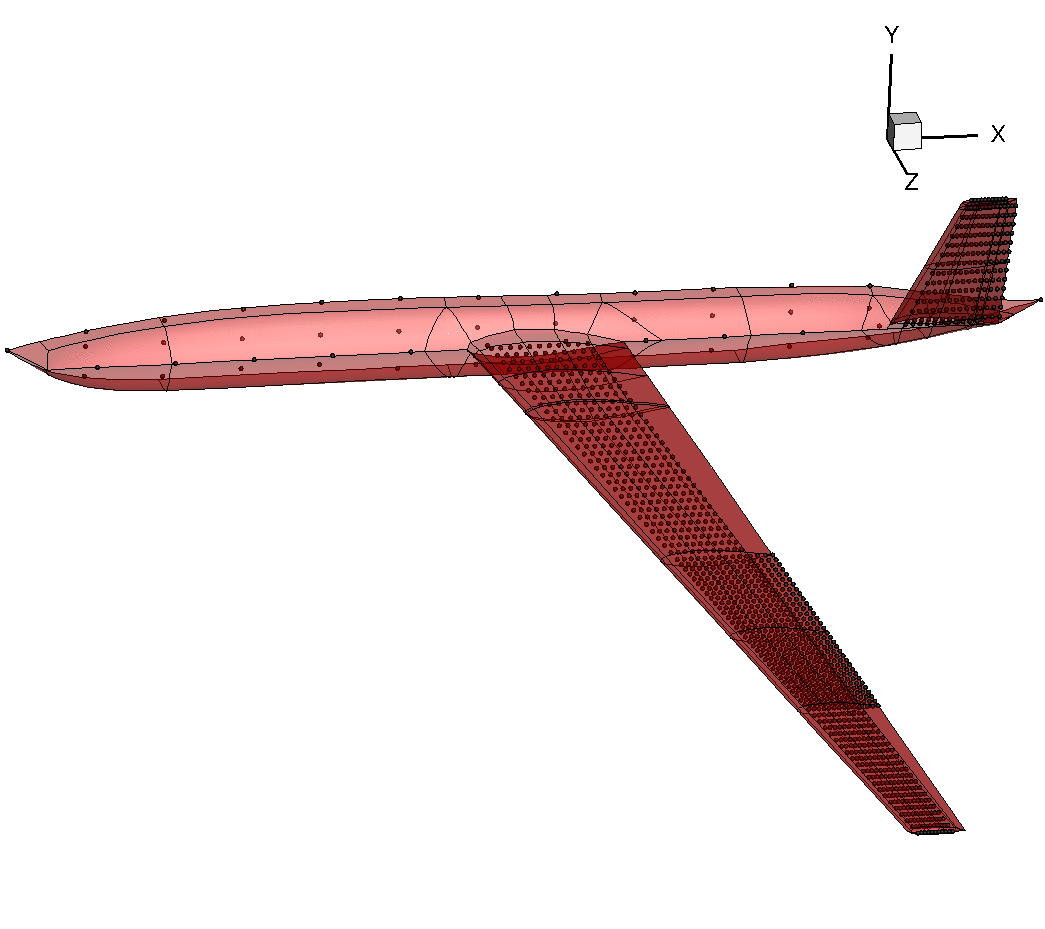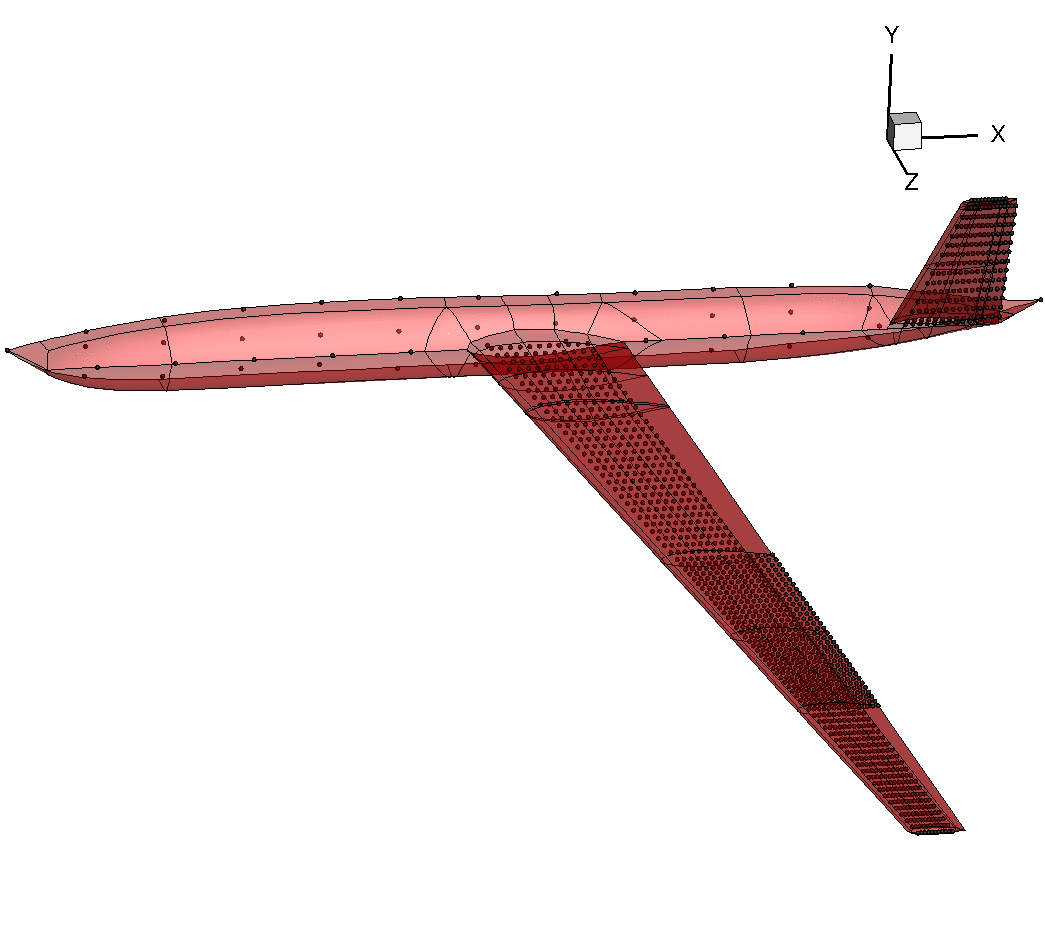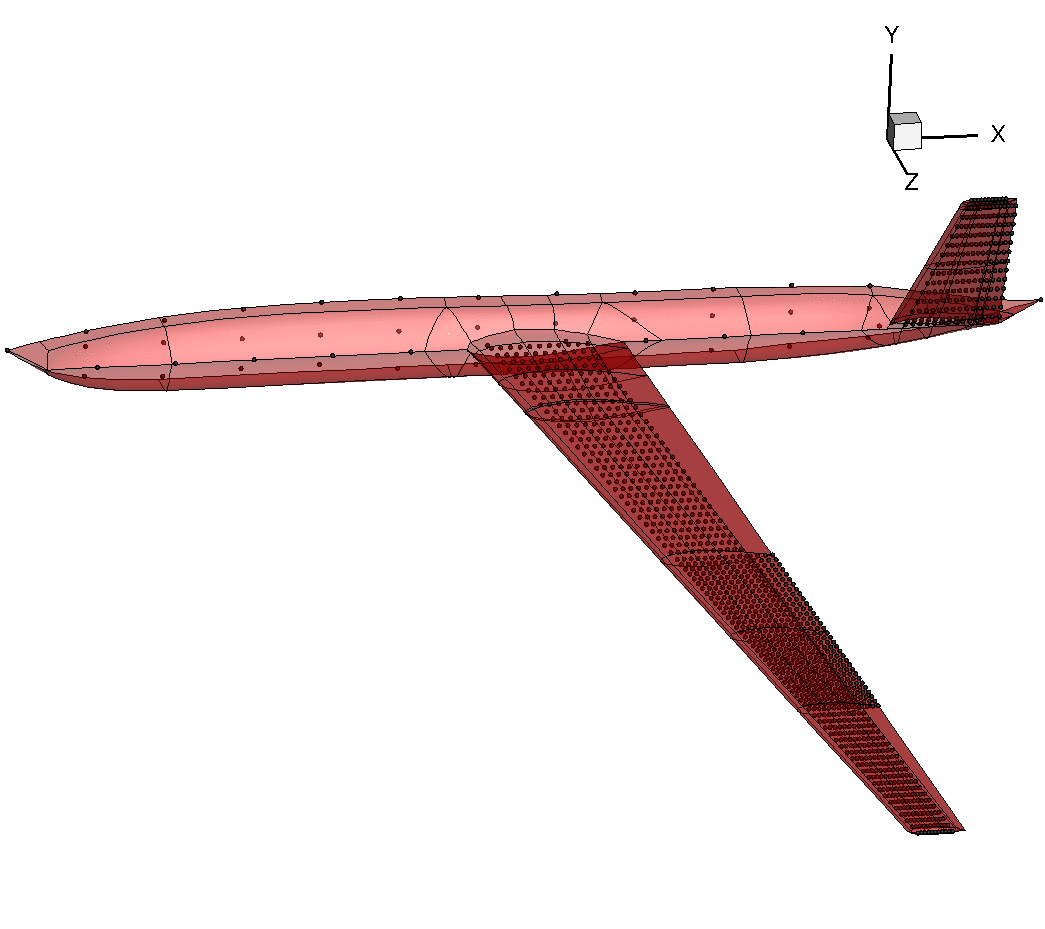FlexFlight Project
Title :
Investigators :
Partner :
Sponsor :
Nonlinear Flexibility Effects on Flight Dynamics and Control of Next-Generation Aircraft
Da Ronch, A., Tantaroudas, N.D., and Badcock, K.J. (University of Liverpool, Liverpool, U.K.)
Simpson, R., Wang, T., Wynn, A., Hesse, H., and Palacios, R.N. (Imperial College, London, U.K.)
Goulart, P. (Swiss Federal Institute of Technology, Zurich, Switzerland)
Airbus UK, BAE Systems, DSTL, QinetiQ
UK Engineering and Physical Sciences Research Council (EPSRC)
Fluid Structure Interaction
The fluid-structure interaction problem arises because the spatial discretizations used in the structural and aerodynamic solvers are non-overlapping and of different topology. The method used here to map the displacements from the structural model to the aerodynamic surface is based on the approach of [1]. Applications of the method to the Goland wing, the Open Source Fighter, and an unmanned aerial vehicle (UAV) provided by DSTL are included.
AGARD 445.6 Wing
AGARD 445.6 wing modeshapes mapped on the aerodynamic surface. The structural model used in the experimental work of [2] contains 121 points. The aerodynamic surface consists of 4737 points. The undeformed structural model is shown along with the experimental modeshapes and the deformed aerodynamic surface (black dots).
Open Source Fighter (OSF)
OSF modeshapes mapped on the aerodynamic surface. The FE structural model of the wing planform is based on a plate discretisation with 429 points. The fuselage is not modelled in the FE model. For the aerodynamic surface, 32208 points were used.
DSTL Unmanned Aerial Vehicle (UAV)
DSTL UAV modeshapes mapped on the aerodynamic surface. The structural models of the wing and the canted tail are based on a plate discretization and elastically suspended to the fuselage. The fuselage is assumed rigid. For the structural model, 1336 grid points are used whereas the aerodynamic surface is made by 8310 points. The animations illustrate the modeshapes of the FE model (black dots) and the deformed aerodynamic surface.
References
[1] Quaranta, G., Masarati, P., and Mantegazza, P., "A Conservative Mesh-Free Approach for Fluid-Structure Interface Problems," International Conference for Coupled Problems in Science and Engineering, 2005.
[2] Yates, E.C., "AGARD Standard Aeroelastic Configurations for Dynamic Response. I - Wing 445.6," NASA R-765, 1988.
